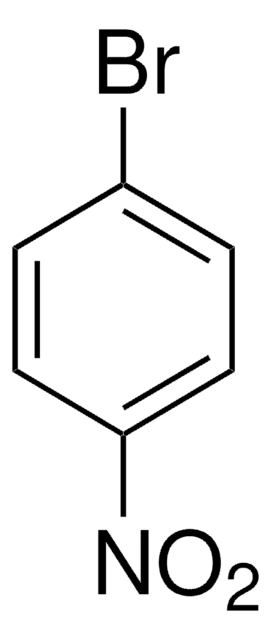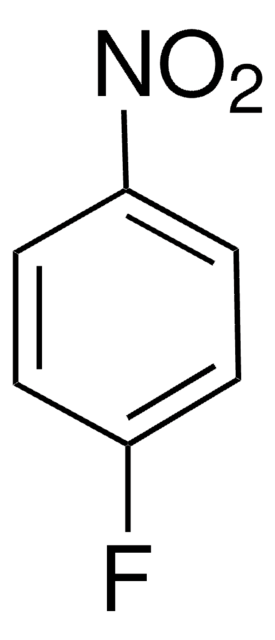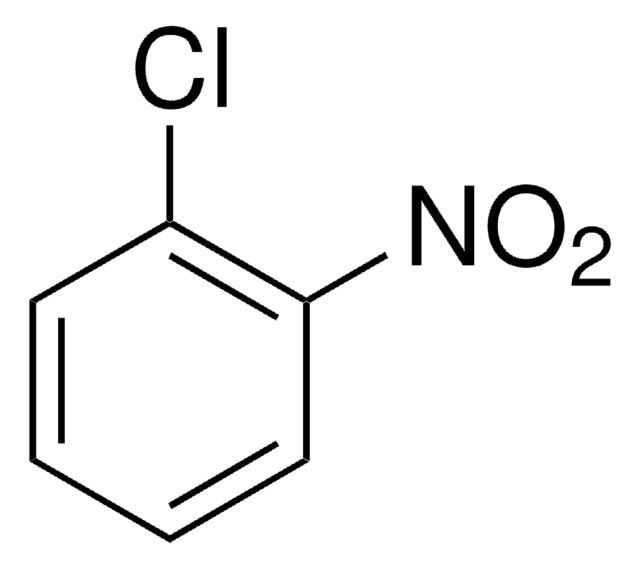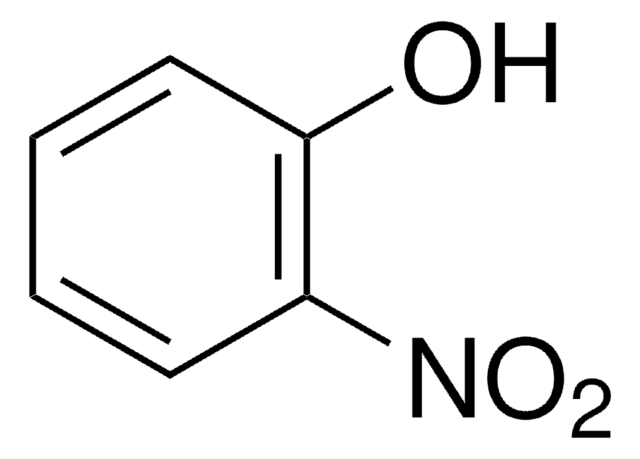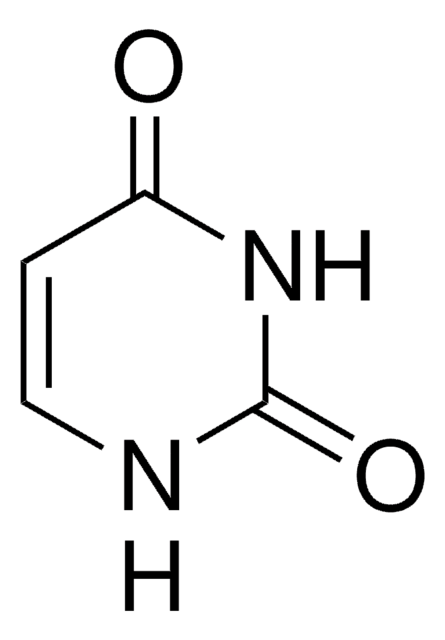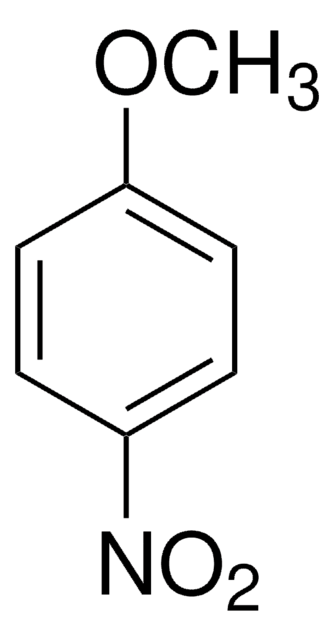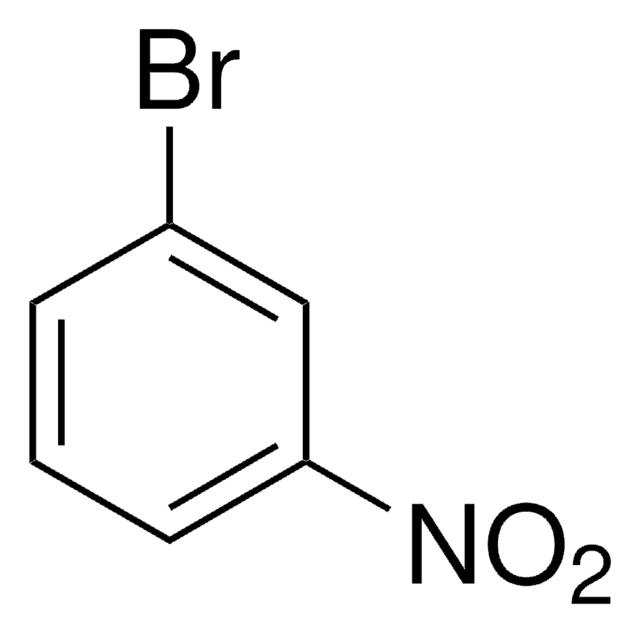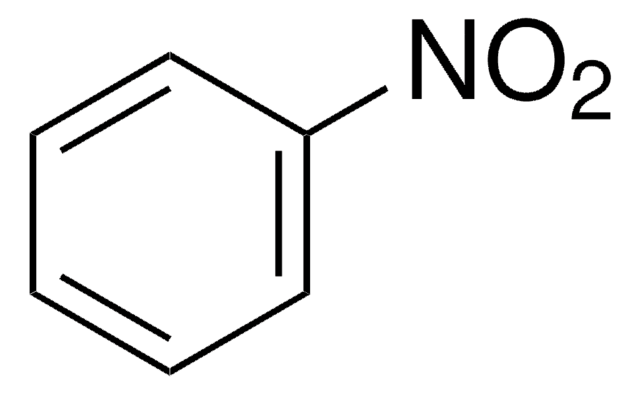C59122
1-Chloro-4-nitrobenzene
99%
Synonym(s):
1-Nitro-4-chlorobenzene, 4-Chloro-1-nitrobenzene, 4-Chloronitrobenzene, 4-Nitro-1-chlorobenzene, PNCB, p-Nitrochlorobenzene, p-Nitrophenyl chloride
About This Item
Recommended Products
vapor density
5.4 (vs air)
Quality Level
vapor pressure
0.09 mmHg ( 25 °C)
assay
99%
form
crystals
autoignition temp.
500 °F
bp
242 °C (lit.)
mp
80-83 °C (lit.)
density
1.298 g/mL at 25 °C (lit.)
SMILES string
[O-][N+](=O)c1ccc(Cl)cc1
InChI
1S/C6H4ClNO2/c7-5-1-3-6(4-2-5)8(9)10/h1-4H
InChI key
CZGCEKJOLUNIFY-UHFFFAOYSA-N
Looking for similar products? Visit Product Comparison Guide
signalword
Danger
Hazard Classifications
Acute Tox. 3 Dermal - Acute Tox. 3 Inhalation - Acute Tox. 3 Oral - Aquatic Chronic 2 - Carc. 2 - Muta. 2 - STOT RE 2
Storage Class
6.1A - Combustible acute toxic Cat. 1 and 2 / very toxic hazardous materials
wgk_germany
WGK 3
flash_point_f
255.2 °F - closed cup
flash_point_c
124 °C - closed cup
Choose from one of the most recent versions:
Already Own This Product?
Find documentation for the products that you have recently purchased in the Document Library.
Customers Also Viewed
Our team of scientists has experience in all areas of research including Life Science, Material Science, Chemical Synthesis, Chromatography, Analytical and many others.
Contact Technical Service